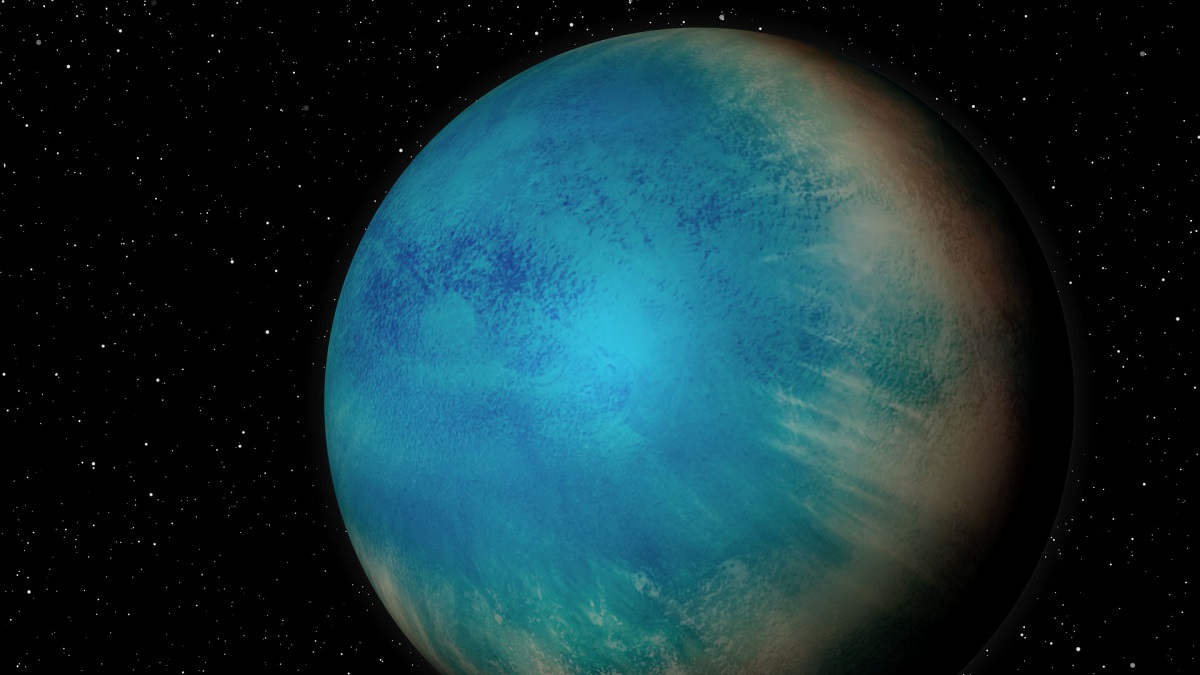A potentially ocean-covered exoplanet has been discovered orbiting binary stars in the constellation of Draco about 100 light-years from Earth.
The planet was given the catchy name TOI-1452 b and its discovery was announced in an article published in the Astronomical Diary.
Slightly larger and heavier than Earth, the planet sits in the “Goldilocks Zone” of the binary star system – where it’s neither too hot nor too cold for liquid water to exist on its surface. Astronomers believe that, like some moons of Jupiter and Saturn, the planet may be covered in deep ocean.
The study of the exoplanet was carried out by an international team led by doctoral student Charles Cadieux from the Institute for Research on Exoplanets (iREx) at the University of Montreal.
“It is thanks to the OMM, to a special instrument designed in our laboratories called SPIRou, and to an innovative analysis method developed by our research team, that we were able to detect this unique exoplanet”, explains René Doyon, professor at the University of Montreal and director of iREx and the Mont Mégantic Observatory (OMM).
The planet was first observed by NASA’s Transiting Exoplanet Survey Satellite (TESS) space telescope.
By making follow-up observations using ground-based telescopes, Cadieux and the team sought to determine the characteristics of the planet.
“It was not a routine check. We had to make sure that the signal detected by TESS was indeed caused by an exoplanet circling the larger of the two stars in this binary system.
The two stars are similar in size, with the larger being about a quarter of the mass of our Sun. They revolve around each other at a distance of about 97 times the orbital distance from Earth to the Sun. The two stars are so close together that TESS sees them as a single bright spot. But the OMM’s PESTO camera was able to resolve the two objects and determined that the exoplanet orbits the larger of the two stars.
Using SPIRou, an infrared instrument on the Canada-France-Hawaii Telescope in Hawaii, the team compiled data from 50 hours of observations to determine that the planet is likely five times the mass of Earth.
Earth is often called the “blue planet” because its surface is 70% covered in water. But this water represents a negligible fraction of the Earth’s total mass – less than one percent.
TOI-1452 b probably deserves this nickname much more. Although probably rocky like Earth, the planet’s radius, mass, and density suggest a very different world.
A number of exoplanets discovered in recent years have densities that suggest much of their mass is made up of materials that are lighter than those that make up the internal structure of rockier planets like Earth. Many of these worlds have been dubbed “ocean planets”.
“TOI-1452 b is one of the best candidates for an ocean planet we’ve found,” Cadieux says. “Its radius and mass suggest a much lower density than would be expected for a planet composed mostly of metal and rock, like Earth.”
In fact, modeling by scientists at the University of Toronto suggests water could make up up to 30% of the planet’s mass, like Jupiter’s moons Ganymede and Callisto and Saturn’s moons Titan and Enceladus. .
The researchers say TOI-1452 b is a good candidate for further observation with the James Webb Space Telescope which can analyze its atmosphere.
“Our observations with the Webb telescope will be essential to better understand TOI-1452 b,” says Doyon. “As soon as we can, we’ll set aside time on Webb to observe this weird and wonderful world.”

